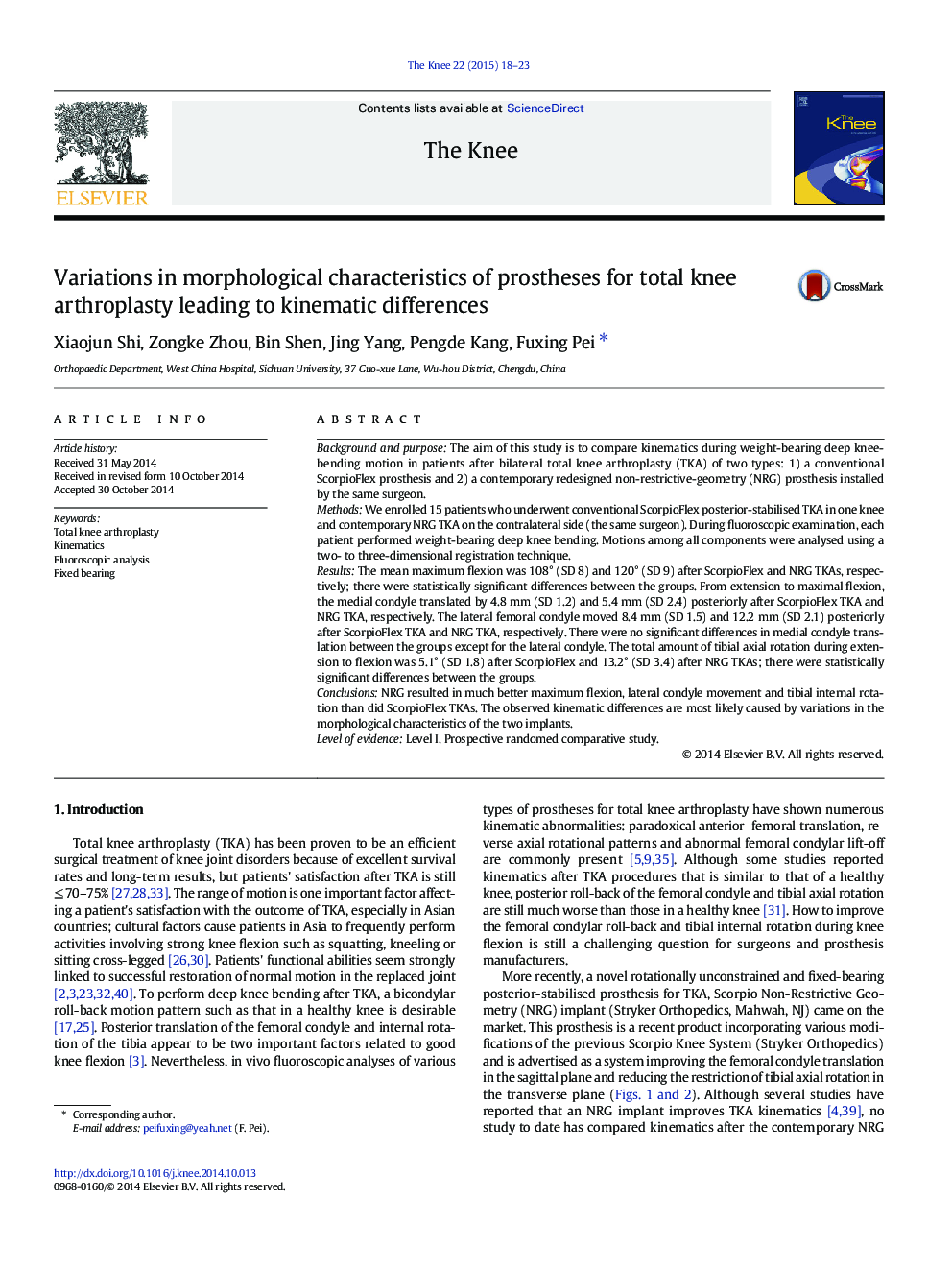| کد مقاله | کد نشریه | سال انتشار | مقاله انگلیسی | نسخه تمام متن |
|---|---|---|---|---|
| 6211400 | 1267215 | 2015 | 6 صفحه PDF | دانلود رایگان |
- 15 patients who underwent conventional ScorpioFlex posterior-stabilised TKA in one knee and contemporary NRG TKA on the contralateral side performed weight-bearing deep knee bending under fluoroscopic examination.
- There were significant differences in lateral condyle translation and tibial internal rotation between the groups except for the medial condyle movement.
- The observed kinematic differences are most likely caused by variations in the morphological characteristics of the two implants.
Background and purposeThe aim of this study is to compare kinematics during weight-bearing deep knee-bending motion in patients after bilateral total knee arthroplasty (TKA) of two types: 1) a conventional ScorpioFlex prosthesis and 2) a contemporary redesigned non-restrictive-geometry (NRG) prosthesis installed by the same surgeon.MethodsWe enrolled 15 patients who underwent conventional ScorpioFlex posterior-stabilised TKA in one knee and contemporary NRG TKA on the contralateral side (the same surgeon). During fluoroscopic examination, each patient performed weight-bearing deep knee bending. Motions among all components were analysed using a two- to three-dimensional registration technique.ResultsThe mean maximum flexion was 108° (SD 8) and 120° (SD 9) after ScorpioFlex and NRG TKAs, respectively; there were statistically significant differences between the groups. From extension to maximal flexion, the medial condyle translated by 4.8 mm (SD 1.2) and 5.4 mm (SD 2.4) posteriorly after ScorpioFlex TKA and NRG TKA, respectively. The lateral femoral condyle moved 8.4 mm (SD 1.5) and 12.2 mm (SD 2.1) posteriorly after ScorpioFlex TKA and NRG TKA, respectively. There were no significant differences in medial condyle translation between the groups except for the lateral condyle. The total amount of tibial axial rotation during extension to flexion was 5.1° (SD 1.8) after ScorpioFlex and 13.2° (SD 3.4) after NRG TKAs; there were statistically significant differences between the groups.ConclusionsNRG resulted in much better maximum flexion, lateral condyle movement and tibial internal rotation than did ScorpioFlex TKAs. The observed kinematic differences are most likely caused by variations in the morphological characteristics of the two implants.Level of evidenceLevel I, Prospective randomed comparative study.
Journal: The Knee - Volume 22, Issue 1, January 2015, Pages 18-23
